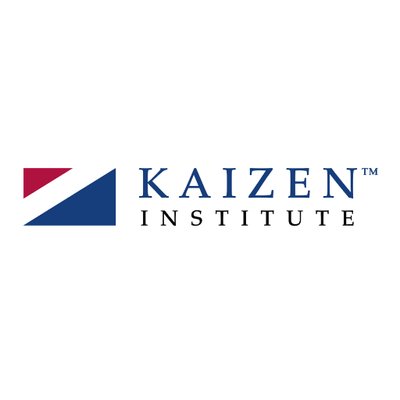Contents:


Straight-line depreciation is the simplest method for calculating depreciation because it assumes that the asset will decline in usefulness on a constant basis from period to period. Depreciation is an accounting process that spreads the cost of a fixed asset, such as property and equipment, over the period of time it will likely be used. Doing so allows a business to match expense recognition with the revenue those expenses support, ultimately resulting in a more accurate picture of its profitability. As such, depreciation is less about asset valuation and more about cost allocation. The straight line method of depreciation provides small business owners with an easy and simple formula for depreciation. In setting up your small business accounting system, knowing your depreciation methods can help you choose the right method that matches the pattern of usage of your fixed assets.
What’s more, different depreciation schedules may be needed for book and tax purposes, as well. Robust automated accounting NetSuite Cloud Accounting Software, can take over this tedious process, reducing the potential for error and freeing employees to work on higher-value activities. Fixed assets, such as machinery, buildings and equipment, are assets that are expected to last more than one year, and usually several years. They are typically high-cost items, and depreciation is meant to smooth out their costs over the time they will be in service. This helps to avoid wild swings in cash balances and profitability on a company’s financial statements that can be caused by expensing all at once.
Step 1: Calculate the cost of the asset
The straight-line basis is calculated by dividing the difference between the cost of an asset and its expected salvage value by the number of years it is expected to be used. Depreciation and amortization are calculated on a straight-line basis. It is the simplest way to calculate the loss of value of an asset over time. In the absence of any information on entity’s policy, depreciation is usually calculated only for the period asset was in use and adjusting the expense by the fraction of period if necessary. However, entities may have specific policies regarding mid-year acquisition or disposal of asset.
You calculate the yearly deduction by multiplying a fraction by the asset cost. Tax considerations, accounting principles, or other factors will determine which method you should use. The total number of units you anticipate it will produce during its lifetime. However, one of the main disadvantages of a straight-line basis is its simplicity. One of the most obvious drawbacks of this method is that the useful life calculation is based on conjecture. The equipment has a 10-year expected life and a salvage value of $500.
Stability analysis of soft–hard-interbedded anti-inclined rock slope … – Nature.com
Stability analysis of soft–hard-interbedded anti-inclined rock slope ….
Posted: Mon, 30 Jan 2023 08:00:00 GMT [source]
When creating an straight line depreciation statement, you’ll debit your depreciation expenses, while creating a credit for an asset called the accumulated depreciation. The straight-line depreciation method can help you find an asset’s book value when you subtract depreciation from an asset. It’s used to reduce the carrying amount of a fixed asset over its useful life. With straight line depreciation, an asset’s cost is depreciated the same amount for each accounting period. You can then depreciate key assets on your tax income statement or business balance sheet.
The Wharton Online and Wall Street Prep Private Equity Certificate Program
They are normally found as a line item on the top of the balance sheet asset. We can also calculate the depreciation rate, given the annual depreciation amount and the total depreciation amount, which is the annual depreciation amount/total depreciation amount. As an example, say you bought a copy machine for your business with a cost basis of $3,500 and a salvage value of $500. To arrive at your annual depreciation deduction, you would first subtract $500 from $3,500. The result, $600, would be your annual straight-line depreciation deduction. You would also credit a special kind of asset account called an accumulated depreciation account.

For example, there is always a risk that technological advancements could potentially render the asset obsolete earlier than expected. Moreover, the straight line basis does not factor in the accelerated loss of an asset’s value in the short-term, nor the likelihood that it will cost more to maintain as it gets older. As a business owner, knowing how to calculate straight line depreciation of your company’s fixed assets is crucial to your business’s success. When keeping your company accounting records, straight line depreciation can be recorded on the depreciation expense account as debit and credit on the accumulated depreciation account. The straight-line method is the most straightforward approach to calculating depreciation or amortisation.
What is the difference between straight-line depreciation and declining balance depreciation?
The straight-line method of depreciation isn’t the only way businesses can calculate the value of their depreciable assets. While the straight-line method is the easiest to use, sometimes companies may need a more accurate method. Below are a few other methods one can use to calculate depreciation.

We provide third-party links as a convenience and for informational purposes only. Intuit does not endorse or approve these products and services, or the opinions of these corporations or organizations or individuals. Intuit accepts no responsibility for the accuracy, legality, or content on these sites. Relevant resources to help start, run, and grow your business. Small Business Stories Celebrating the stories and successes of real small business owners. At the end of the ten-year period, the remaining value is the residual value at which Jason expects to sell the machine.
Depreciation expense
Even if you’re still struggling with understanding some accounting terms, fortunately, straight line depreciation is pretty straightforward. If you’re looking for accounting software to help you keep better track of your depreciation expenses, be sure to check out The Ascent’s accounting software reviews. Regardless of the depreciation method used, the total depreciation expense recognized over the life of any asset will be equal. However, the rate at which the depreciation is recognized over the life of the asset is dictated by the depreciation method applied. Accumulated depreciation is carried on the balance sheet until the related asset is disposed of and reflects the total reduction in the value of the asset over time.
Depreciation Schedules: A Beginner’s Guide – The Motley Fool
Depreciation Schedules: A Beginner’s Guide.
Posted: Fri, 05 Aug 2022 07:00:00 GMT [source]
Estimate the asset’s salvage value, or how much it can be sold for at the end of the useful life. Straight-line amortization schedules are simple and reduce the amount of required record-keeping. Straight-line depreciation is easy to calculate and consistently applied. A half-year convention for depreciation is a depreciation schedule that treats all property acquired during the year as being acquired exactly in the middle of the year. Straight line basis is popular because it is easy to calculate and understand, although it also has several drawbacks. Full BioAmy is an ACA and the CEO and founder of OnPoint Learning, a financial training company delivering training to financial professionals.
The Struggles of Private Company Accounting
Things wear out at different rates, necessitating different depreciation methods, such as the double declining balance method, the sum of years method, or the unit-of-production method. When it comes to calculating depreciation with the straight-line method, you must refer to the IRS’s seven property classes to determine an asset’s useful life. These seven classes are for property that depreciates over three, five, seven, 10, 15, 20, and 25 years. For example, office furniture and fixtures fall under the seven-year property class, which is the amount of time you have to depreciate these assets.
- The fixed asset will now have an updated annual depreciation expense of $11,667 for each year of its remaining useful life.
- Straight-line depreciation is a popular method for allocating the cost of fixed assets over the duration of their useful lives.
- Cash And Cash EquivalentsCash and Cash Equivalents are assets that are short-term and highly liquid investments that can be readily converted into cash and have a low risk of price fluctuation.
- The declining balance method of depreciation does not recognize depreciation expense evenly over the life of the asset.
- The depreciation of an asset is spread evenly across the life.
That means the value of the equipment can be spread over ten years. The Ascent is a Motley Fool service that rates and reviews essential products for your everyday money matters. We’re firm believers in the Golden Rule, which is why editorial opinions are ours alone and have not been previously reviewed, approved, or endorsed by included advertisers.
It paid with cash and, based on its experience, estimates the truck will likely be in service for five years . Use the standard straight-line depreciation formula, below, to calculate annual depreciation expense. Depreciation impacts a company’s income statement, balance sheet, profitability and net assets, so it’s important for it to be correct.

Straight-line https://1investing.in/ is an accounting process that spreads the cost of a fixed asset over the period an organization expects to benefit from its use. The units of production method is based on an asset’s usage, activity, or units of goods produced. Therefore, depreciation would be higher in periods of high usage and lower in periods of low usage. This method can be used to depreciate assets where variation in usage is an important factor, such as cars based on miles driven or photocopiers on copies made. A fixed asset account is reduced when paired with accumulated depreciation as it is a contra asset account.
